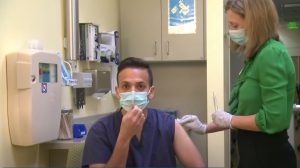NEW YORK (Reuters Health) – The American Academy of Pediatrics (AAP) and the Advisory Committee on Immunization Practices of the Centers for Disease Control and Prevention (CDC) recommend reducing the number of doses of rabies vaccine given for post-exposure prophylaxis (PEP) from five to four.
The Rabies Prevention Policy Update is published in the April issue of Pediatrics. The AAP’s Committee on Infectious Diseases notes that the cornerstones of rabies PEP have been prompt washing of the wound, infiltration of human rabies immune globulin around the wound, and a 5-dose schedule of cell-derived rabies vaccine administered over 28 days.
However, a vaccine shortage in 2007 prompted a review of the dosing schedule. It found that all subjects achieved an adequate titer of neutralizing antibody after the fourth dose on day 14. Furthermore, imperfect adherence to the 5-dose schedule so that only three or four doses were given in about 300 cases did not result in any human cases of rabies.
These considerations, plus substantial projected costs savings, led to the new recommendation that four 1-mL doses of human diploid cell vaccine or purified chick embryo cell vaccine be administered to immunocompetent subjects. With the first dose given on day 0, the next three doses should be administered on days 3, 7, and 14, the report advises.
All other protocol recommendations remain unchanged. These include the recommendation that the 5-dose schedule be retained for immunosuppressed individuals, that the injections be given in the deltoid (or thigh in children) and not the gluteal area, and that pregnancy or breastfeeding are not contraindications.
Pediatrics 2011;127:785–787.




